Simply Slip Covers
Used by permission of Sunset Books Inc. This book is now out of print.
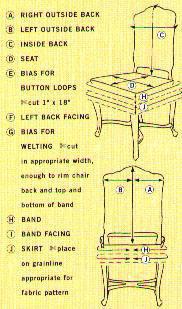
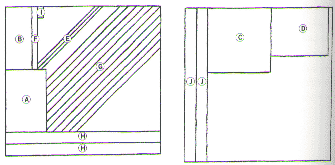
Skirted Button Back Cover
On the right outside back fabric piece (A), press 3" to the wrong side on the center back edge. On the right side of the piece, mark the center back line parallel to and 2" from the fold. On the left outside back (B), draw the center back seamline. Overlap the pieces, aligning the center back lines, and pin.*
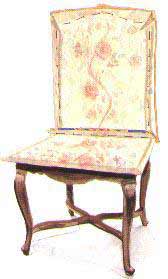
Pin-fit the outside back, inside back (C), and seat (D) on the chair, centering the marked, pinned center back, shaping the top edge, and folding tucks at the upper corners of the inside back. Mark the shape of the seat, and shape the intersection of the seat and inside back appropriately at the side edges.
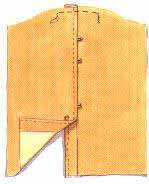
On the back, mark the placement of the buttons and loops as shown in the photograph, or as desired. Remove the pinned pieces from the chair, true up the seamlines, disassemble the pieces, and mark the seam allowances. Trim the excess fabric. Baste the tucks in the upper corners of the inside back.
Make six self-filled tubular button loops (E). Details on page 41 of Simply Slip Covers. But wrap the bias over a very thin cord and stitch 1/4" from the fold; do not trim the seam allowance from the bias and, after you turn the tubing right side out, remove the cord. Cut the tubing to the appropriate length to encircle your buttons, plus seam allowance. With right sides together and cut edges aligned, place four loops on the left outside back at the positions marked in the previous step; staystitch.
With the right sides together, pin and sew the facing (F) to the center back edge of the left outside back. Turn the facing to the wrong side and press; topstitch. To complete the right outside back edge, top stitch along the fold. Matching the centers as before, overlap the left ouside back; baste across the top.
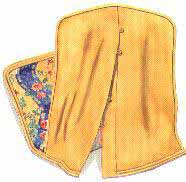
Make the welting (G) and, right sides together and cut edges aligned, sew it to the right side of the outside back around the side and top edges.
With right sides together, sew the seat to the inside back. Sew the outside back to the inside back. Turn right side out and press.
Sew welting to the lower edge of the cover, finishing the ends so they butt at the center back. To do this, remove about 1" of stitching at each end of the bias and open it out, cut the cord at the center back line, trim the end of the cord, then refold the bias and stitch the welting in place.

Sew the pieces of the band (H) together to make one length. Determine the left center back end. Position the two remaining button loops on it, centering them between the top and bottom seamlines and spacing them as you did the other pairs of loops; baste.
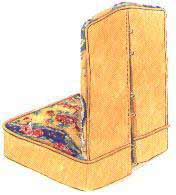
Finish one end of the band facing (I). With the right sides together and cut edges aligned, place it over the end of the band with the loops, and sew. Turn the facing to the wrong side, press and topstitch along the fold. Finish the other end of the band with a self-facing as on the right outside back.
With the right sides together, sew the band to the welted bottom edge of the cover.
Sew welting to the bottom edge of the band; finish the ends at the center back. On the lower edge of the band, mark the center front, the center of each side, and each corner.
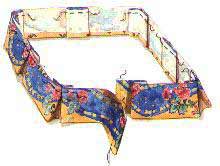
Sew the pieces of the skirt (J) together to make one length. Hem the lower edge.
In the skirt, form 1 1/2 "-deep inverted pleats to align with the center front, center of each side and each corner. Also make a knife pleat to align with the right center back edge, extending the return to the edge of the underlap. Fold each end of the skirt to the wrong side to make a facing. Baste the pleats and facings in place.
With the right sides together and cut edges aligned, pin the skirt to the bottom edge of band, aligning pleats with marks, and sew.
Sew the buttons to the right back piece to correspond to the button loops.
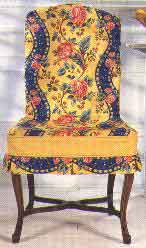
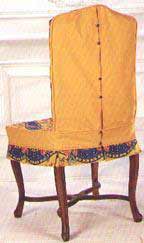
Front and back view of finished cover.
